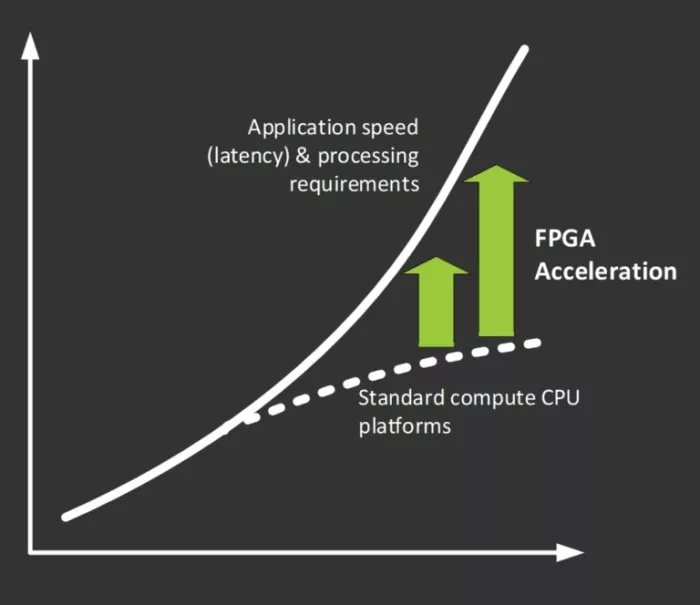Redefining Speed: How FPGAs are shaping the future of high-frequency trading
By Jean-François Gagnon, Orthogone
In high-frequency trading (HFT), milliseconds are too slow, microseconds are competitive, and nanoseconds win. The relentless pursuit of speed has driven firms to explore technologies that push the boundaries of performance, determinism, and efficiency. Field-Programmable Gate Arrays (FPGAs) are no longer optional in this race—they are foundational to next-generation trading infrastructure.
In this article, we explore how FPGAs are transforming high-frequency trading and other latency-critical industries. You’ll learn:
- Why traditional CPU-based systems struggle to meet the demands of modern markets,
- How FPGAs deliver deterministic, nanosecond-level performance,
- What it takes to design and integrate a successful FPGA-based architecture.
From real-time data processing to full-stack system engineering, this guide covers the key insights you need to stay ahead in the race for speed.
The latency arms race
Financial markets have evolved into hyper-competitive ecosystems where the fastest system often secures the edge. Even the slightest improvements in latency—measured in nanoseconds—can determine the difference between profit and loss. Traditional software stacks, running on CPUs and governed by general-purpose operating systems, face inherent limitations such as OS jitter, context switching, and cache latency.

FPGAs overcome these bottlenecks by executing logic at the hardware level. With custom architectures tailored for specific tasks—like market data filtering, order book reconstruction, and trade execution—FPGAs deliver deterministic behavior and consistent ultra-low-latency performance. In a world where latency equals opportunity, determinism is no longer a luxury; it’s a strategic imperative.
Unlike software-based solutions that rely on sequential instruction pipelines, FPGAs process data in parallel, achieving cycle-level precision and throughput. This enables ultra-fast data path optimization, significantly reducing the number of processing hops between packet arrival and trade execution. For instance:
- Market data can be decoded, filtered, and normalized entirely within the FPGA.
- Pre-trade risk assessments can be embedded directly in hardware logic.
- Signal-triggered order execution can be activated instantaneously.
Such capabilities allow trading firms to migrate latency-sensitive components away from CPUs, ensuring predictability and speed—regardless of external load or market volatility.
The advantages of FPGAs in trading systems
While HFT is a high-stakes example, the performance benefits of FPGAs extend well beyond trading. In industries where deterministic response and real-time processing are essential, FPGAs are driving innovation:
- Automotive: Advanced driver-assistance systems (ADAS) depend on real-time image recognition and control systems.
- Medical Imaging: Devices like MRI and ultrasound scanners require rapid, high-resolution signal processing.
- Aerospace and Defense: Applications such as radar, guidance, and communications rely on predictable, ultra-fast data handling.
These fields share critical needs: low latency, high reliability, and adaptability. With reconfigurable logic and hardware-level execution, FPGAs are uniquely positioned to meet these complex requirements.
Beyond Wall Street — Broader applications of FPGA technology
Unlocking the full potential of FPGAs demands more than selecting the right silicon—it requires holistic system engineering:
- Firmware and HDL Design: Clean, efficient HDL ensures tight timing closure and resource-efficient logic.
- Board-Level Design: Signal integrity, power optimization, and high-speed I/O must be expertly managed.
- Software Integration: Seamless interaction with software stacks—ranging from Linux kernel drivers to user-level trading logic—is vital.
The future of high-frequency trading is being etched in silicon. FPGAs offer an unrivaled combination of speed, precision, and reconfigurability. But tapping into their potential takes more than hardware—it takes architectural foresight, hands-on engineering expertise, and a deep understanding of performance-critical domains.
As the latency race accelerates, firms that master FPGA acceleration won’t just keep pace—they’ll define the new standard of performance. And the impact will echo far beyond trading—anywhere speed meets intelligence; FPGAs will be there.
Related Semiconductor IP
- 10-Gbps Ultra-Low Latency Ethernet MAC and PCS
- ULL PCIe DMA Controller
- ULL TCP/IP, UDP/IP Offload Engine
- HBM4 PHY IP
- eFuse Controller IP
Related Articles
- The Future of Embedded FPGAs - eFPGA: The Proof is in the Tape Out
- How FPGAs, multicore CPUs, and graphical programming are changing embedded design
- How FPGAs are breathing new life into the analog video format
- How Low Can You Go? Pushing the Limits of Transistors - Deep Low Voltage Enablement of Embedded Memories and Logic Libraries to Achieve Extreme Low Power
Latest Articles
- Making Strong Error-Correcting Codes Work Effectively for HBM in AI Inference
- Sensitivity-Aware Mixed-Precision Quantization for ReRAM-based Computing-in-Memory
- ElfCore: A 28nm Neural Processor Enabling Dynamic Structured Sparse Training and Online Self-Supervised Learning with Activity-Dependent Weight Update
- A 14ns-Latency 9Gb/s 0.44mm² 62pJ/b Short-Blocklength LDPC Decoder ASIC in 22FDX
- Pipeline Stage Resolved Timing Characterization of FPGA and ASIC Implementations of a RISC V Processor